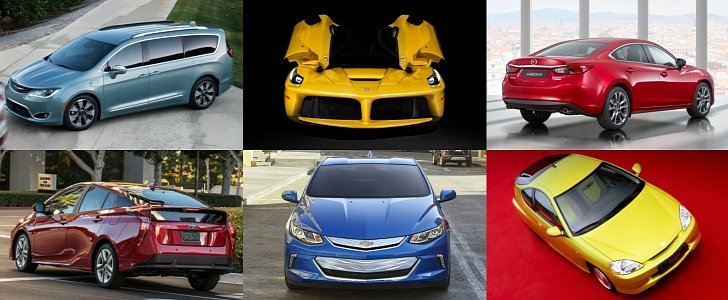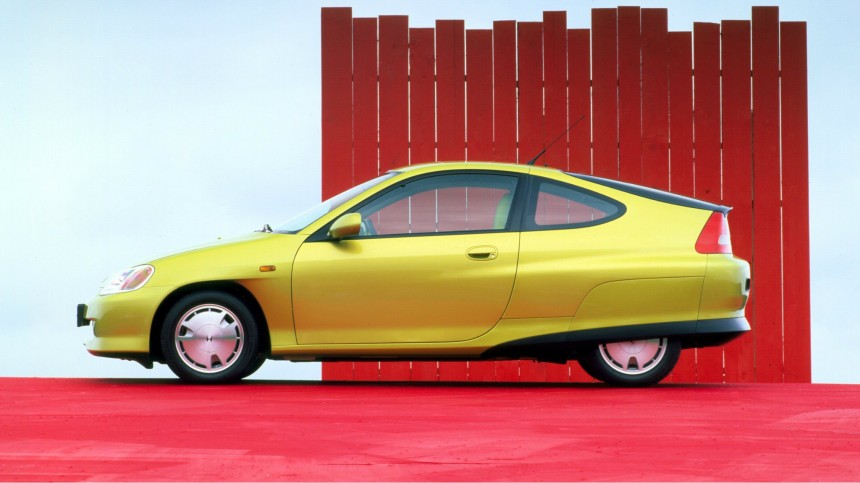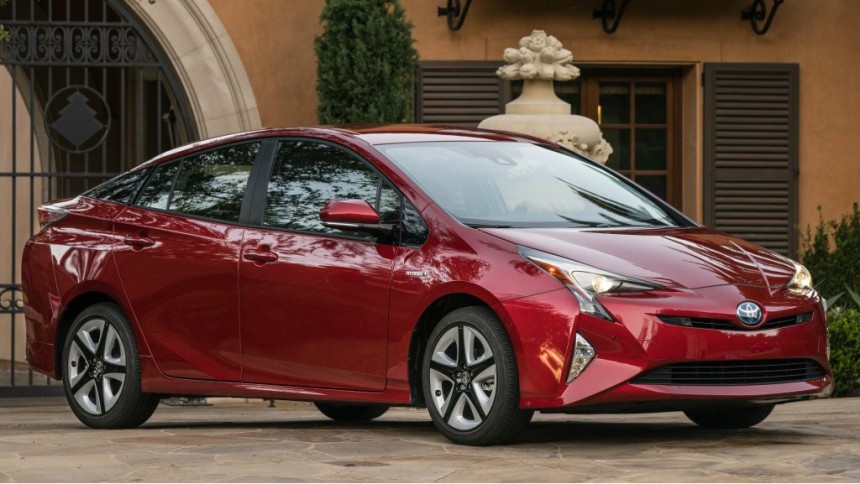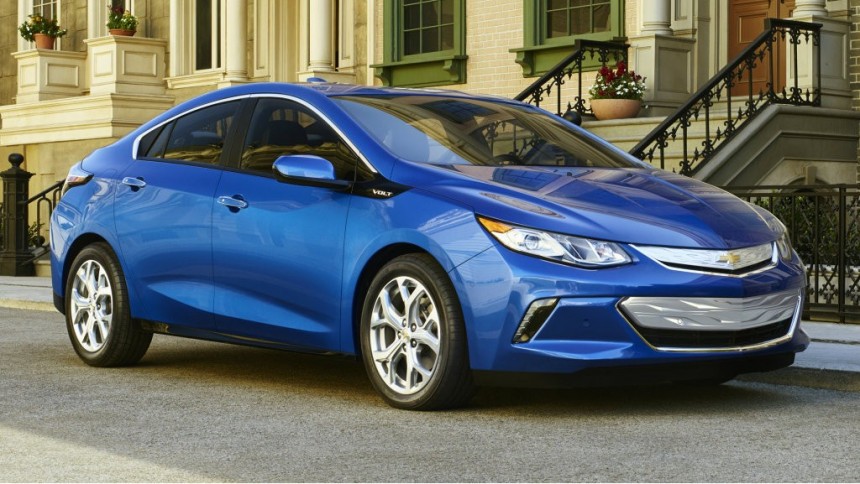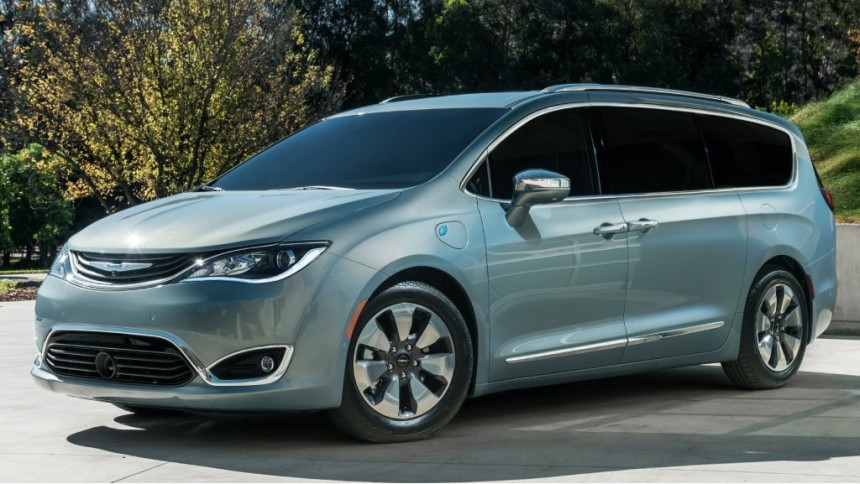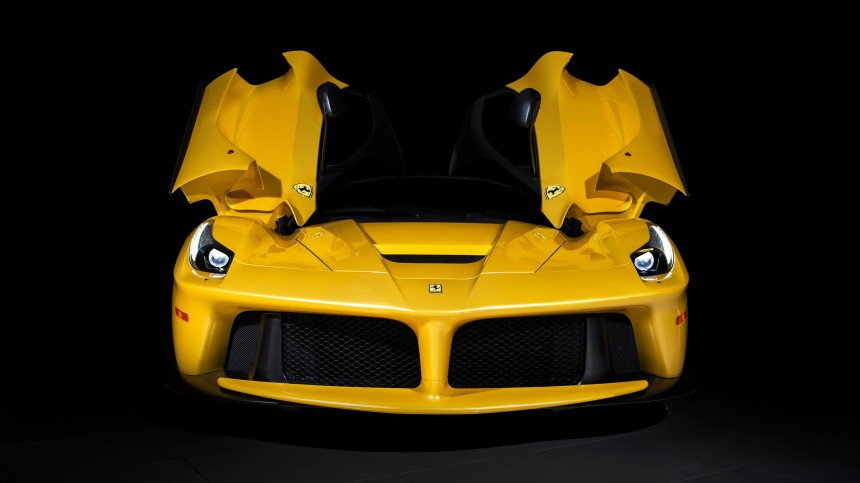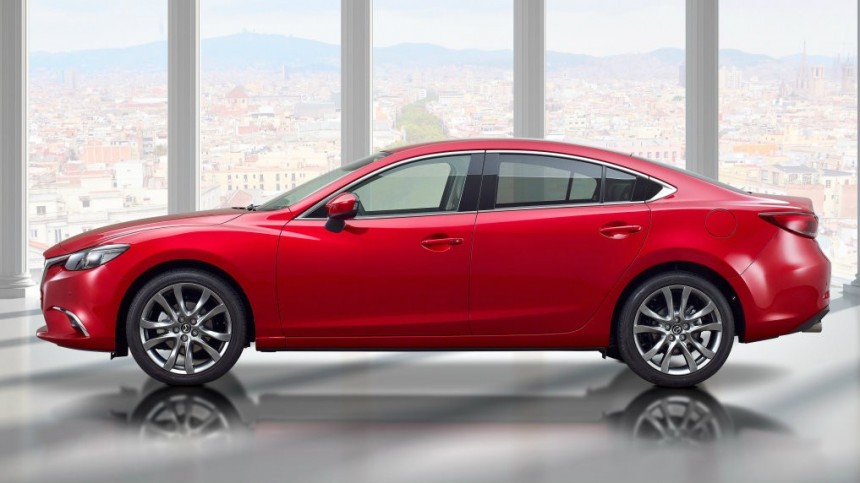Hybrid vehicles come in many shapes and sizes. A hybrid car can be fundamentally different from another hybrid car, even though the badge on the rear reads exactly the same thing.
The purpose of this guide is simple. More to the point, we’re here to help you understand what kind of hybrid car is the one you drive and what makes it different from the unassuming Chevrolet Volt and awe-inspiring LaFerrari.
But first, let’s start with a brief history of the hybrid car. The first-ever hybrid vehicle to be attested as such is the Lohner-Porsche Mixte Hybrid. The brainchild of Lohner-Werke and Ferdinand Porsche was first shown at the Paris world fair in 1900, which means that the hybrid is over a century old.
The Lohner-Porsche gasoline-electric vehicle used its gasoline-fed internal combustion engine as a generator and a ginormous lead-acid battery to drive the wheels via hub-mounted electric motors. Later on, in the 1960s, the AMC Amitron became the first American car to employ regenerative braking, a vital technology in the hybrid vehicle realm, from micro hybrids to full hybrids.
Be that as it may, modern hybrid vehicle history begins in the 1990s, the era that gave us the Dolly the sheep, the Spice Girls, the Gulf War, and that guy who once declared that he “did not have sexual relations with that woman.”
Now that we’ve covered the basics, let’s find out how many types of hybrid vehicles are there. Unfortunately for the greater good of mankind, nobody can agree on how many there are because theories are inconsistent and opinions are like A-holes: everybody has one. Nevertheless, the autoevolution team believes there arefive six categories of hybrids out there, as follows:
The parallel hybrid system was brought into the limelight by Honda with the first generation of the Insight. Yes, that Insight with the UFO-like design, two seats, and an EPA-rated highway mileage of 61 mpg or 3.9 liters/100 km.
What made it tick? The belly of the eco-friendly beast is the Honda Integrated Motor Assist parallel hybrid system. In the first-generation Honda Insight, the IMA can’t power the car on electricity alone. What it can do, though, is use the electric motor to help the engine work its magic.
In plain English, the electric motor is connected to the drivetrain (located on the crankshaft, for example) and all does is provide additional power under acceleration and recharge the battery under braking.
The first-gen Insight can’t run on electricity alone, though, just like the Honda CR-Z can't either. Thus, it isn’t a "full hybrid" like the BMW i8. Other examples of parallel hybrid vehicles include the Honda Accord Hybrid and Volvo XC90 T8 Twin Engine. The Volvo uses its electric motor to drive the rear wheels, thus enabling all-wheel-drive.
Regarding advantages, parallel hybrid vehicles pride themselves on less energy transfer between the engine and the wheels. But the thing is, parallel hybrids rely more on the internal combustion engine than the electric motor.
If it’s fuel economy you’re after, then the series-parallel hybrid system is just what the doctor ordered. Often referred to as power-split hybrid, this setup uses two sources of propulsion: an electric motor and an engine.
The difference between it and a parallel hybrid is that series-parallel hybrid employs a planetary gear set, thus sharing the power from the engine and electric motor. Depending on the car, the power split can be 100 percent for the ICE, 100 percent for the electric motor, or any imaginable ratio in-between. The best-known application of the series-parallel hybrid system is the Toyota Hybrid Synergy Drive. To be more specific, the Toyota Prius.
As the name implies, the series-parallel hybrid setup merges the pros and cons of parallel and series hybrids. Nevertheless, it is significantly more efficient than either a parallel or series hybrid. Other than the extremely popular Toyota Prius, popular series-parallel hybrids include the Ford Fusion Hybrid, the Lexus CT 200h, LS Hybrid, RX Hybrid, as well as the NX Hybrid.
Remember the Lohner-Porsche Mixte Hybrid from a few paragraphs ago? That’s a series hybrid and so is the BMW i3 REx, the Chevrolet Volt, and even the Fisker Karma. To make things a little bit simpler to comprehend, the series hybrid is an extended range electric vehicle.
Wikipedia, CARB, and other boffins refer to hybrids from this category as EREV (extended-range electric vehicles), REEV (range-extended electric vehicles) or BEVx (range-extended battery-electric vehicle). Regardless of how it’s called, the biggest advantage of a series hybrid is simplicity because the electric motor/s motive the car, not the ICE.
The internal combustion engine has one role to fulfill. That role is to behave as an on-board generator. Believe it or not, most diesel-fed locomotives are series hybrid because the thumping great oil-chugging engine is there to drive a DC generator or an AC alternator-rectifier.
But for all that, series hybrids tend to be more expensive than parallel hybrids and even electric vehicles. For example, there’s a $3,850 difference between the BMW i3 EV and the BMW i3 with the two-cylinder range extender.
The name says it all. This is the type of hybrid vehicle you can plug in to fill ‘er up with electricity. From the Toyota Prius Prime to the Ford Fusion Energi and even the Chrysler Pacifica Plug-In Hybrid minivan, PHEVs are pretty varied.
This degree of hybridization usually comes with larger batteries than regular hybrids. Here’s a case in point: the Hyundai Ioniq Hybrid is dependent on a 1.56 kWh lithium-ion polymer battery. The pluggable variant of the Hyundai Ioniq, on the other hand, comes with an 8.9 kWh Li-Ion polymer pack.
Needless to say this, but the main disadvantage of a PHEV over a hybrid is the additional weight of the larger battery. Nevertheless, the easiest way to work around the biggest con of the plug-in hybrid is to drive in pure electric mode for short distances. By doing so, a Volt owner managed to drive 1,000 miles on 5 gallons of gas because he mostly drove his plug-in hybrid car “10 miles back and forth to work.” That's pretty cool if you ask me.
Mild hybrid also refers to a degree of hybridization. The following line could make some jaws drop, but the Ferrari LaFerrari, Chevrolet Silverado eAssist Hybrid, and Suzuki Baleno SHVS are related. As simply put as possible, a mild hybrid is similar to a parallel hybrid, yet it offers limited hybrid features.
In other words, a mild hybrid uses its electric motor to provide a teeny-weeny bit of assistance to the engine. The essential thing you need to know about the mild hybrid system is that it cannot provide pure electric propulsion.
And that, dear reader, is why this setup is called a mild hybrid. The so-called Kinetic Energy Recovery System (or KERS) found in Formula 1 cars is related to the mild hybrid cars you can buy from the dealership.
In the LaFerrari hypercar, the freely aspirated V12 engine is the superhero and the electric motor is the sidekick. And no, the LaFerrari can’t be driven in all-electric mode such as the Porsche 918 Spyder and the McLaren P1.
The micro hybrid is something invented by the marketing departments of a handful of automakers. That’s why the autoevolution team doesn’t acknowledge the micro hybrid as being a true hybrid. For all that, the micro hybrid setup is getting better from year to year.
Micro hybrid systems include the Mazda i-Eloop in the Mazda6, Ford Auto Start-Stop (as found in the 2017 Ford F-150 with the 3.5-liter EcoBoost V6), and Kia Idle Stop & Go. In broader terms, micro hybrid equals a vehicle that employs some sort of start-stop system.
Another aspect that separates micro hybrids from true hybrids is that these vehicles rely only on fossil fuel for propulsion. These said, the thing with micro hybrids is that there are three types of micro hybrids.
Tier 1 refers to vehicles equipped with stop-start. Tier 2 is another way of saying stop-start plus regenerative braking. As for Tier 3, this type of micro hybrid needs to have stop-start, regenerative braking, an AGM battery, and a starter/generator unit. The latter replaces the alternator and starter motor and the AGM battery supports high burst of amps. Simple stuff, right?
But first, let’s start with a brief history of the hybrid car. The first-ever hybrid vehicle to be attested as such is the Lohner-Porsche Mixte Hybrid. The brainchild of Lohner-Werke and Ferdinand Porsche was first shown at the Paris world fair in 1900, which means that the hybrid is over a century old.
The Lohner-Porsche gasoline-electric vehicle used its gasoline-fed internal combustion engine as a generator and a ginormous lead-acid battery to drive the wheels via hub-mounted electric motors. Later on, in the 1960s, the AMC Amitron became the first American car to employ regenerative braking, a vital technology in the hybrid vehicle realm, from micro hybrids to full hybrids.
Be that as it may, modern hybrid vehicle history begins in the 1990s, the era that gave us the Dolly the sheep, the Spice Girls, the Gulf War, and that guy who once declared that he “did not have sexual relations with that woman.”
Now that we’ve covered the basics, let’s find out how many types of hybrid vehicles are there. Unfortunately for the greater good of mankind, nobody can agree on how many there are because theories are inconsistent and opinions are like A-holes: everybody has one. Nevertheless, the autoevolution team believes there are
Parallel Hybrid
What made it tick? The belly of the eco-friendly beast is the Honda Integrated Motor Assist parallel hybrid system. In the first-generation Honda Insight, the IMA can’t power the car on electricity alone. What it can do, though, is use the electric motor to help the engine work its magic.
In plain English, the electric motor is connected to the drivetrain (located on the crankshaft, for example) and all does is provide additional power under acceleration and recharge the battery under braking.
The first-gen Insight can’t run on electricity alone, though, just like the Honda CR-Z can't either. Thus, it isn’t a "full hybrid" like the BMW i8. Other examples of parallel hybrid vehicles include the Honda Accord Hybrid and Volvo XC90 T8 Twin Engine. The Volvo uses its electric motor to drive the rear wheels, thus enabling all-wheel-drive.
Regarding advantages, parallel hybrid vehicles pride themselves on less energy transfer between the engine and the wheels. But the thing is, parallel hybrids rely more on the internal combustion engine than the electric motor.
Series-Parallel Hybrid
The difference between it and a parallel hybrid is that series-parallel hybrid employs a planetary gear set, thus sharing the power from the engine and electric motor. Depending on the car, the power split can be 100 percent for the ICE, 100 percent for the electric motor, or any imaginable ratio in-between. The best-known application of the series-parallel hybrid system is the Toyota Hybrid Synergy Drive. To be more specific, the Toyota Prius.
As the name implies, the series-parallel hybrid setup merges the pros and cons of parallel and series hybrids. Nevertheless, it is significantly more efficient than either a parallel or series hybrid. Other than the extremely popular Toyota Prius, popular series-parallel hybrids include the Ford Fusion Hybrid, the Lexus CT 200h, LS Hybrid, RX Hybrid, as well as the NX Hybrid.
Series Hybrid
Wikipedia, CARB, and other boffins refer to hybrids from this category as EREV (extended-range electric vehicles), REEV (range-extended electric vehicles) or BEVx (range-extended battery-electric vehicle). Regardless of how it’s called, the biggest advantage of a series hybrid is simplicity because the electric motor/s motive the car, not the ICE.
The internal combustion engine has one role to fulfill. That role is to behave as an on-board generator. Believe it or not, most diesel-fed locomotives are series hybrid because the thumping great oil-chugging engine is there to drive a DC generator or an AC alternator-rectifier.
But for all that, series hybrids tend to be more expensive than parallel hybrids and even electric vehicles. For example, there’s a $3,850 difference between the BMW i3 EV and the BMW i3 with the two-cylinder range extender.
Plug-In Hybrid
This degree of hybridization usually comes with larger batteries than regular hybrids. Here’s a case in point: the Hyundai Ioniq Hybrid is dependent on a 1.56 kWh lithium-ion polymer battery. The pluggable variant of the Hyundai Ioniq, on the other hand, comes with an 8.9 kWh Li-Ion polymer pack.
Needless to say this, but the main disadvantage of a PHEV over a hybrid is the additional weight of the larger battery. Nevertheless, the easiest way to work around the biggest con of the plug-in hybrid is to drive in pure electric mode for short distances. By doing so, a Volt owner managed to drive 1,000 miles on 5 gallons of gas because he mostly drove his plug-in hybrid car “10 miles back and forth to work.” That's pretty cool if you ask me.
Mild Hybrid
In other words, a mild hybrid uses its electric motor to provide a teeny-weeny bit of assistance to the engine. The essential thing you need to know about the mild hybrid system is that it cannot provide pure electric propulsion.
And that, dear reader, is why this setup is called a mild hybrid. The so-called Kinetic Energy Recovery System (or KERS) found in Formula 1 cars is related to the mild hybrid cars you can buy from the dealership.
In the LaFerrari hypercar, the freely aspirated V12 engine is the superhero and the electric motor is the sidekick. And no, the LaFerrari can’t be driven in all-electric mode such as the Porsche 918 Spyder and the McLaren P1.
Micro Hybrid
Micro hybrid systems include the Mazda i-Eloop in the Mazda6, Ford Auto Start-Stop (as found in the 2017 Ford F-150 with the 3.5-liter EcoBoost V6), and Kia Idle Stop & Go. In broader terms, micro hybrid equals a vehicle that employs some sort of start-stop system.
Another aspect that separates micro hybrids from true hybrids is that these vehicles rely only on fossil fuel for propulsion. These said, the thing with micro hybrids is that there are three types of micro hybrids.
Tier 1 refers to vehicles equipped with stop-start. Tier 2 is another way of saying stop-start plus regenerative braking. As for Tier 3, this type of micro hybrid needs to have stop-start, regenerative braking, an AGM battery, and a starter/generator unit. The latter replaces the alternator and starter motor and the AGM battery supports high burst of amps. Simple stuff, right?
